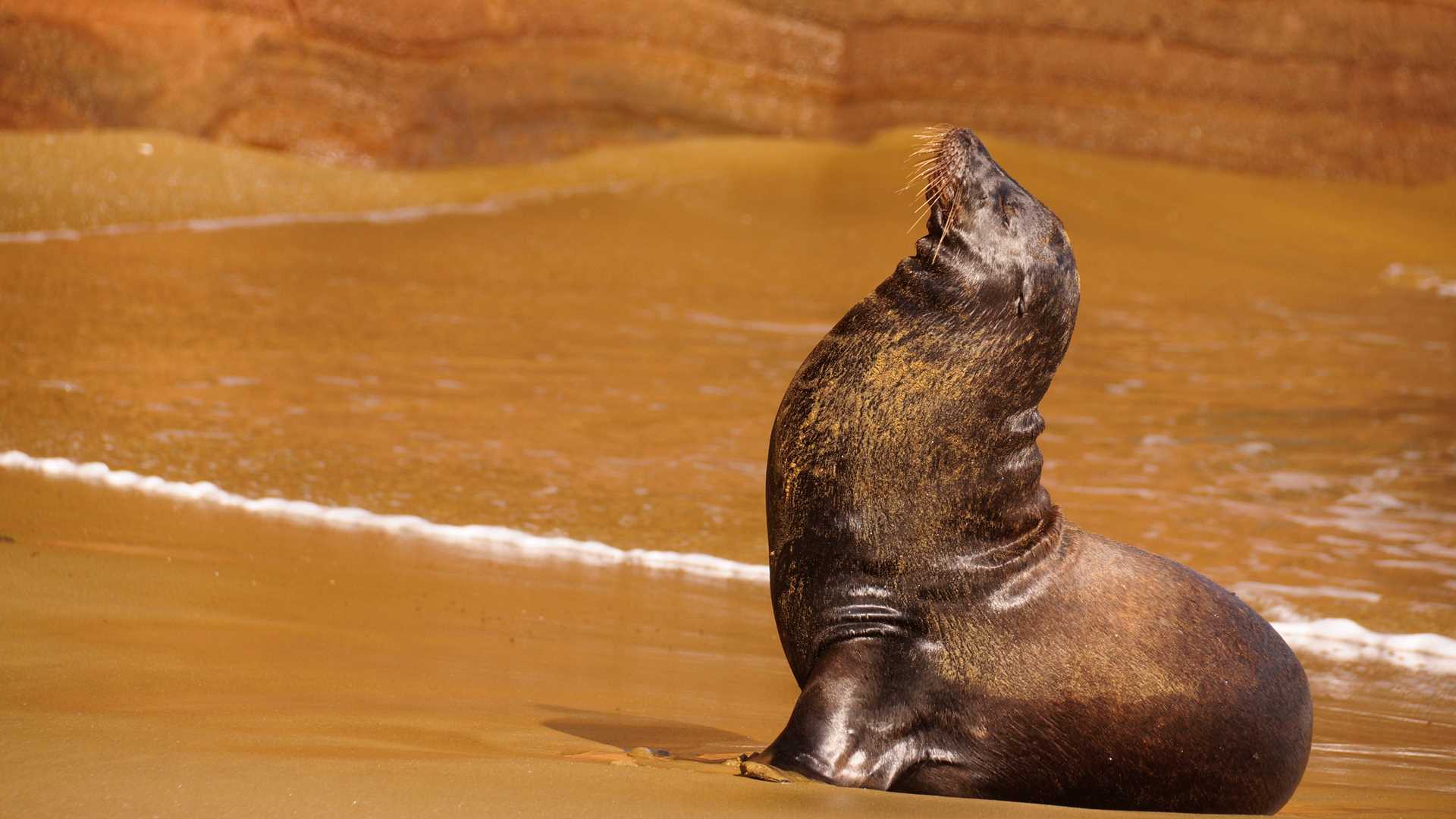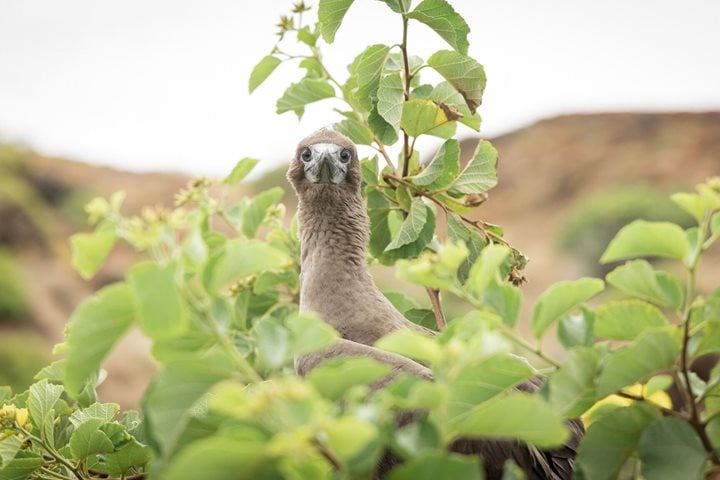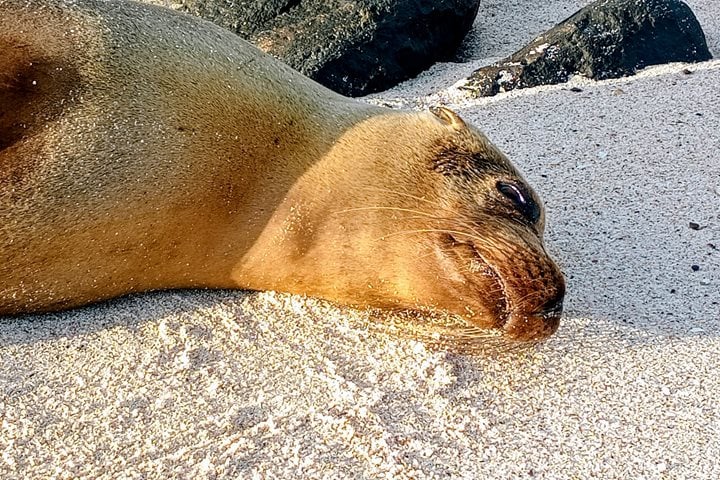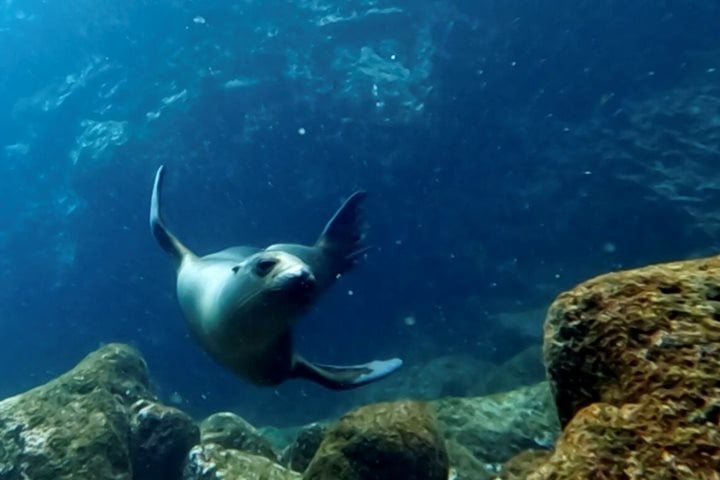Early in the morning, National Geographic Islander arrived at Punta Pitt, the most eastern point in the archipelago. This visitor site is impressive due to its geology. After breakfast, we went for a hike that brought us to one of the most beautiful places on the island—home of the red-footed boobies, the only species of boobies that we had not seen yet. Here we also observed blue-footed boobies in their nesting grounds. After the spectacular hike, we enjoyed swimming and snorkeling from the beach with a group of playful Galapagos sea lions.
In the afternoon, we disembarked on a long coralline beach, a wonder of nature. Our guests enjoyed easy strolls and swimming in the turquoise waters. Our faithful companions, the Galapagos sea lions, were all along the beach, posing lazily for last pictures. It was a perfect day and a great expedition that will stay in our hearts forever!







